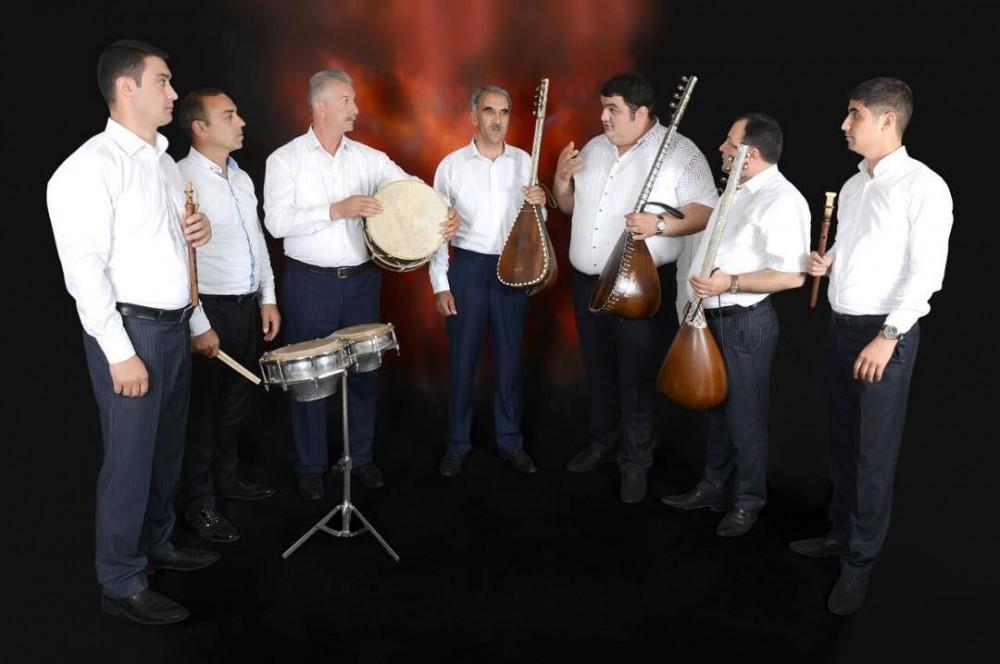Azerbaijani ashugs to perform at international festival in Croatia

By Laman Ismayilova
Azerbaijani ashugs will perform at the international festival to be held in Zagreb, Croatia on July 20, Azertag reported.
The delegation of ashugs will include Sanubar Baghirova, Aghamurad Israfilov, Vugar Mahmudoghlu, Ali Tapdıgoghlu, who will be accompanied by talented musicians Ganimat Gadirov, Bakhish Binyatov, Shohrat Aliyev and Shamsi Fataliyev.
Zagreb International Folklore Festival organized in mid-July, is a cultural presentation of all folklore groups belonging to Croatia, other European countries and from remaining continents.
The festival’s 50th edition should recall the history and role of folklore festivals in Croatia, as well as the changes the festival has undergone over time.
The program will include performances by folklore groups and individuals who represent the diversity of Croatian ethnographic heritage, as well as the representatives of national minorities.
Moreover, a dozen ensembles will present the heritage of other nations and cultures. The festival will run until July 24.
Ashig art began to form in Azerbaijan since ancient times. Ashiq art is a music form of oral art formed in folk environment and in terms of impact strength, popularity and uniqueness of maturity it is an expression having no analogue.
The sources of ashiq art include the art of Turkic ozans who created the prominent literary monument “Book of Dede Gorgud” 1300 years ago, as well as ecstatic acts of early Sufi dervishes who were called “haqq ashiqi” (lovers of Truth) in the Turkic world.
Classical heritage of Azerbaijani ashiqs consist of more than 200 songs, 150 dastans (large literary-musical compositions), 1500-2000 poems in different traditional poetic forms (goshma, garayli, tajnis, divani, mukhammas etc.).
Schools of Azerbaijan ashiq art include large regional art milieus such as Shirvan (eastern), Ganjabasar and Borchaly (western) milieus, and also a number of schools and milieus of Iranian (Southern) Azerbaijan – in Tabriz, Qaradag, Urmiya etc.
Despite the regional differences ashiqs are united by a common national language, musical repertoire and the saz, an invariable attribute of the Azerbaijani ashiqs, which may be accompanied with such musical instruments as balaban, nagara, gosha nagara and gaval. Saz is one of the symbols of the Turkic world.
The instrument got its final shape in the 16th century. It is sounded mainly with plectrum made of cork of cherry tree. In most cases, the arm and sides body of Saz are adorned with pearls. The stringed musical instrument, Saz is played solo and in ensembles.
The art of Azerbaijani Ashiqs was included in the UNESCO`s Representative List of the Intangible Cultural Heritage of Humanity in 2009, as a symbol of national cultural identity that embodies various artistic spheres practiced by poets, composers, singers or actor-narrators, thus uniting in one artistic expression the communities of the entire country.
---
Laman Ismayilova is AzerNews’ staff journalist, follow her on Twitter: @Lam_Ismayilova
Follow us on Twitter @AzerNewsAz
Here we are to serve you with news right now. It does not cost much, but worth your attention.
Choose to support open, independent, quality journalism and subscribe on a monthly basis.
By subscribing to our online newspaper, you can have full digital access to all news, analysis, and much more.
You can also follow AzerNEWS on Twitter @AzerNewsAz or Facebook @AzerNewsNewspaper
Thank you!
